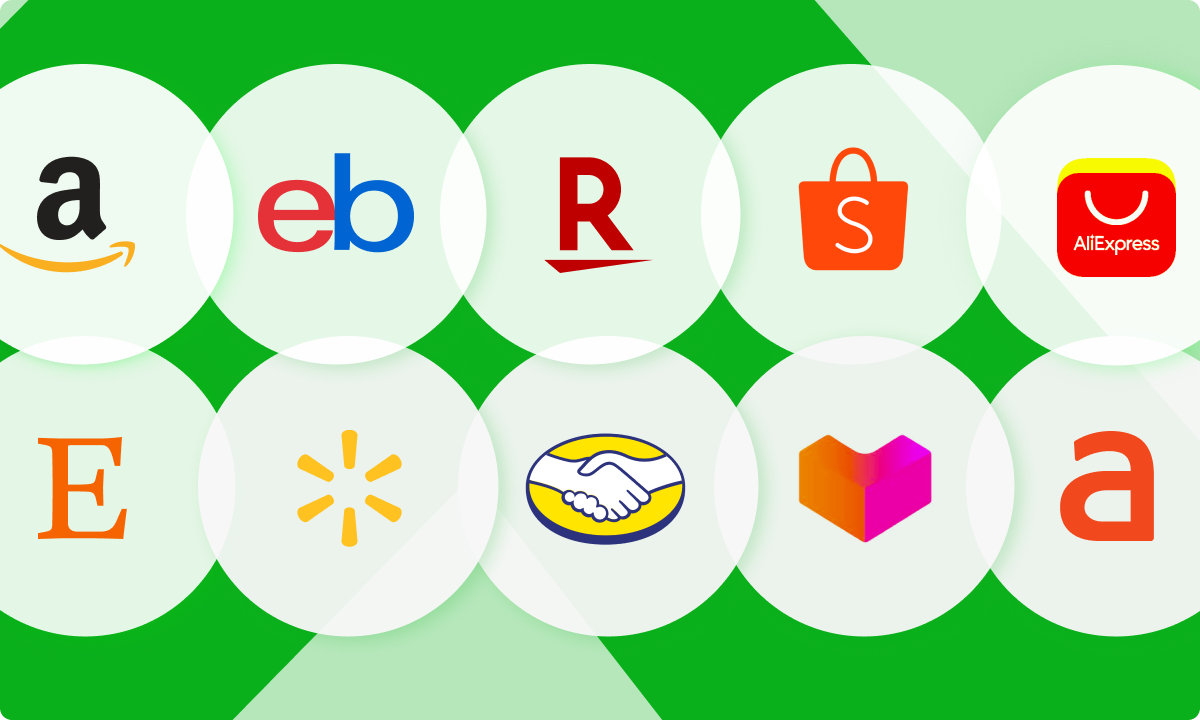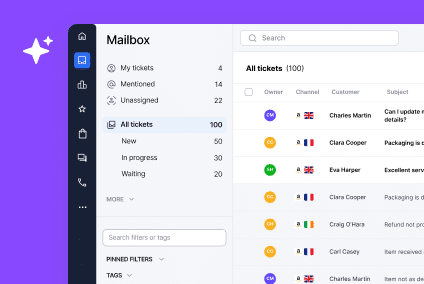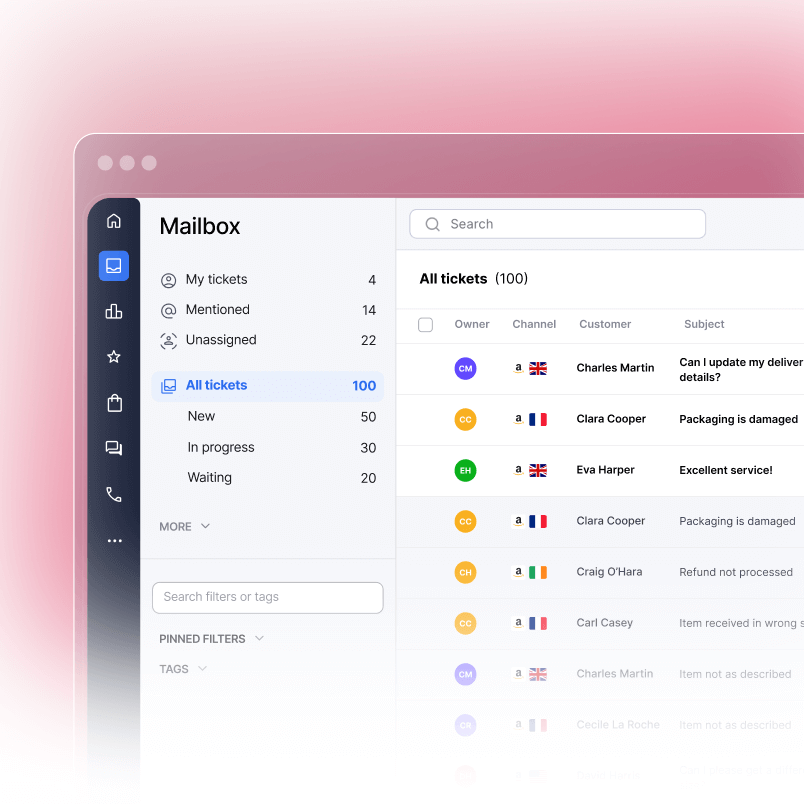The world’s biggest online marketplaces in the world are on a rapid upward trajectory. In fact, according to a 2025 report, global eCommerce sales are expected to reach $8.1 trillion by 2026, with online marketplaces contributing significantly to this growth.
Top online marketplaces now contribute over $7 trillion to the global economy each year, a massive increase from previous projections.
In the US, Amazon alone accounted for roughly 37.6% of the country’s eCommerce market share in 2025, while globally, Amazon captured approximately $729 billion in gross merchandise value (GMV) across its 22 operating domains worldwide.
So, if you’re an online seller looking to increase sales, getting set up on a new online retail marketplace is a great way to boost exposure. You may even want to expand into new territories. With more than 150 online markets around the globe, let’s take a look at some of the best.
1. Amazon
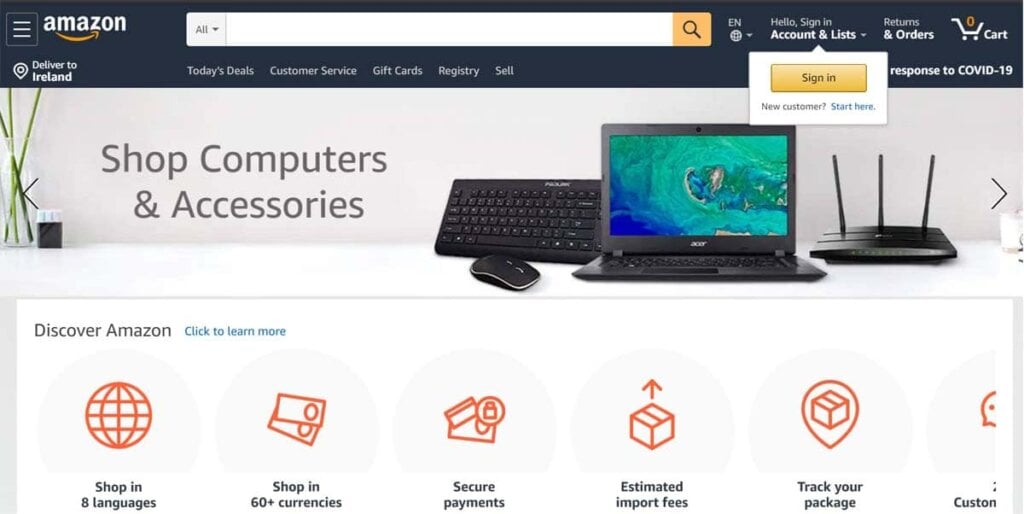
Who: We all know Amazon is the largest eCommerce retailer in the US, but it also runs some of the biggest online marketplaces in the world in Europe, Asia, the Middle East and Australia. In total, the company runs 22 marketplaces, which offer sellers access to consumers around the world.
What: Electronics, clothing, beauty, baby products, jewelry, entertainment, home goods, appliances, sporting equipment and pretty much everything!
When: First launched in 1994.
Where: The US, Canada, Mexico, Brazil, the UK, Germany, France, Italy, Spain, the Netherlands, Japan, India, Australia, Singapore, the UAE, Turkey, Sweden, Poland, Belgium, and Egypt.
How much: You have to pay a monthly subscription fee of $39.99, and an Amazon referral fee of 6-20% on each item you sell. Media products also incur an additional closing fee.
Customer profile: Amazon receives over 4.8 billion visits monthly worldwide, with over 300 million active customers globally in 2025. Amazon Prime serves over 200 million members globally, with a 99% two-year renewal rate in the US.
Key requirements for sellers: Excellent eCommerce customer service is required. You also need a valid credit card, bank account, phone number and tax information to get started. To sell in Europe, you’ll also require a VAT number.
2025 Updates: Amazon’s marketplace generated approximately $375.1 billion in GMV from Amazon.com alone in 2024, with 60% of Amazon’s sales coming from independent sellers. The platform processed nearly $700 billion in total product sales worldwide.
2. eBay
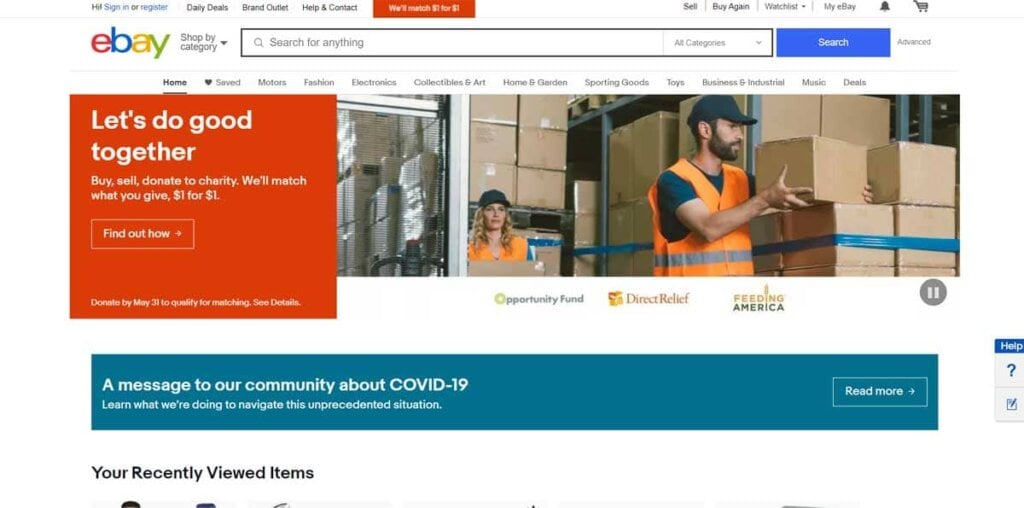
Who: eBay started out as a marketplace for second-hand items. Now, it is a household name known across the world for selling both new and used products.
What: Electronics, toys, clothing, beauty, entertainment, home goods, sporting equipment, pet supplies, collectibles and antiques.
When: Founded in 1995.
Where: eBay runs 23 international marketplaces which serve over 100 countries worldwide.
How much: It charges a flat fee of $0.30 to publish each listing and takes a percentage of each sale, usually 10%. Businesses that open an eBay storefront will be charged a monthly subscription fee too.
Customer profile: As of 2025, eBay had 132 million active buyers worldwide. In the US alone, it maintains strong visitor traffic as the second-largest online retail marketplace after Amazon.
Key requirements for sellers: Anyone can start selling on eBay easily. Too many late shipments or product defects can result in account suspension, however.
Recent updates: eBay was originally a marketplace mainly focused on auction-based sales, but in recent times, they have gravitated towards a ‘Buy it now’ option on products. 88% of items sold now have a ‘Buy it now’ option.
Related article: How to Sell on eBay
3. Taobao
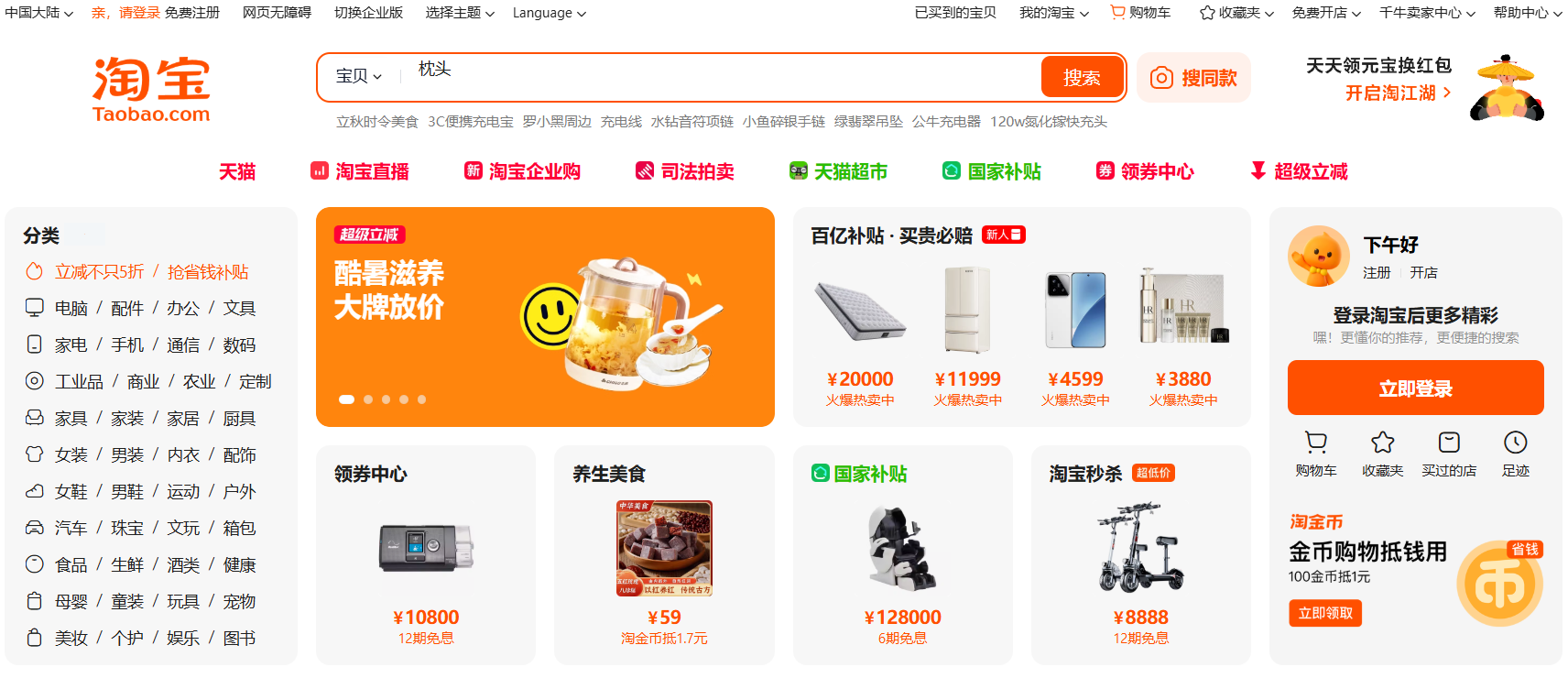
Who: Taobao has emerged as the world’s largest marketplace by third-party sales volume, operated by Chinese technology giant Alibaba Group.
What: It sells electronics, clothing, jewelry, beauty, entertainment, and virtually every product category imaginable.
When: Launched in 2003.
Where: Primarily serves the Chinese market but has global influence through Alibaba’s ecosystem.
How much: Taobao operates on a freemium model with optional paid services for enhanced visibility and features.
Customer profile: Taobao is one of the most-visited websites in the world, with the Taobao app having 895 million monthly users. In 2025, it leads with $723.8 billion in third-party web sales and is projected to reach $762.0 billion.
Key requirements for sellers: Sellers must comply with Chinese regulations and Alibaba’s seller policies.
4. Shopee

Who: Shopee is South-East Asia’s most popular marketplace and ranks among the top marketplaces globally. With frequent updates, it aims to tailor its platform to suit local users.
What: Shopee sells electronics, clothing, beauty, home goods, pet supplies, sporting equipment and toys.
When: Founded in 2015.
Where: Shopee was first launched in Singapore before expanding to Malaysia, Thailand, Taiwan, Indonesia, the Philippines, Vietnam, and Brazil.
How much: Shopee charges a commission fee that varies by category, typically ranging from 2-6% plus payment processing fees.
Customer profile: In 2025, Shopee boasts 295 million users across Southeast Asia, with $77.2 billion in third-party web sales, making it the sole representative from Southeast Asia in the top global marketplace rankings.
Key requirements for sellers: Anyone can set up on Shopee under a brand name or their own name; you just need a bank account and to comply with local regulations.
5. AliExpress

Who: A household name, AliExpress comes in fifth among the world’s biggest online marketplaces in the world. It was originally set up to sell the products of Chinese small businesses to global consumers.
What: Everything from clothing and electronics, to home goods, jewelry, toys and pet supplies.
When: Launched in 2010.
Where: AliExpress’ global eCommerce platform serves people in over 220 different countries and regions.
How much: Depending on the product category, AliExpress takes between 5-10% from each sale.
Customer profile: In 2025, AliExpress maintains 400 million active members globally, connecting international buyers with Chinese sellers.
Key requirements for sellers: Sellers must have a registered business and comply with international shipping regulations.
Related article: Alibaba vs AliExpress: which platform is best for dropshipping
6. Etsy
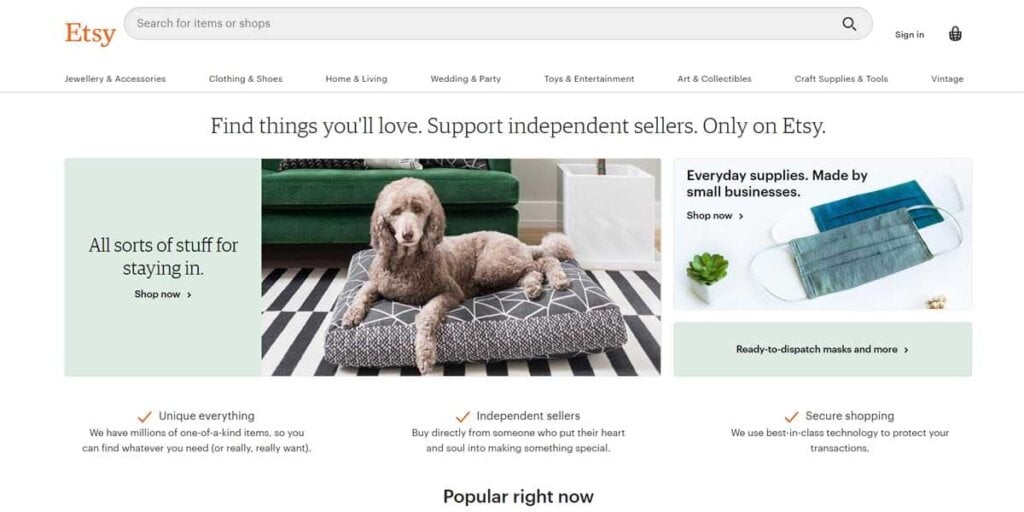
Who: Etsy is a niche American marketplace focused on selling handmade products, vintage items and craft supplies.
What: Art, jewelry, clothing, home decor, toys, art, craft supplies and tools.
When: 2005.
Where: Available in 50 countries, including the US, Australia, Singapore and much of Europe.
How much: Etsy charges a listing fee of $0.20 and 6.5% of each sale, plus payment processing fees.
Customer profile: In 2025, Etsy had over 92 million active buyers globally, serving primarily those seeking unique and personalized goods.
Key requirements for sellers: Craft supplies, tools and party supplies are the only newly manufactured items allowed. 97% of Etsy sellers are home-based, emphasizing its focus on individual artisans.
Recent updates: Sellers now have the option to enroll in the Share & Save Program. With Share & Save, you can save on Etsy fees when you drive your own traffic to your shop and listings.
7. Walmart

Who: Walmart is the world’s largest retailer and is now also one of the world’s top online marketplaces. It holds a 6.4% share in the US eCommerce market in 2025.
What: It offers electronics, clothing, beauty, entertainment, home goods, appliances, sporting equipment and groceries.
When: The marketplace was set up in 2009.
Where: The USA, Canada, Africa, Chile, China, India and Mexico.
How much: Sellers pay a referral fee of 6-15% on each sale. There is no monthly subscription fee.
Customer profile: Walmart receives over 400 million monthly visits worldwide, with exceptional customer support driving customer loyalty.
Key requirements for sellers: Sellers must apply to sell on the marketplace. You must have an established reputation, as well as a warehouse and business registered in the USA.
Recent updates: Walmart’s eCommerce business became profitable in 2025, with US online sales growing 21% year over year. Walmart Fulfillment Services (WFS) now includes big and bulky items, offering low-cost end-to-end fulfillment solutions for large items like canoes or trampolines.
2025 Performance: Walmart’s US eCommerce sales reached $65.4 billion in 2024, representing a 22% increase from the previous year.
Related article: How to sell on Walmart: The Step-by-Step Guide
8. Mercado Libre
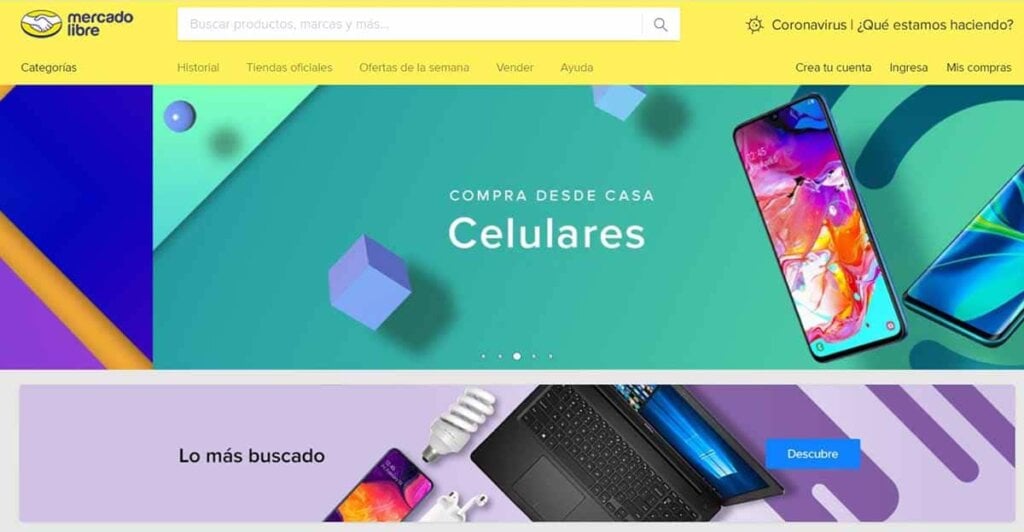
Who: Mercado Libre is the leading marketplace in South America. Sellers in the US and China can use Mercado Libre’s partner carriers to ship here.
What: It sells electronics, clothing, home goods and garden accessories.
When: Founded in 1999.
Where: Mercado Libre operates in 18 Latin American countries. Its cross-border trade program lets sellers reach customers in Mexico, Brazil, Chile, Argentina and Colombia with a single account.
How much: The platform takes 16-17.5% of each sale.
Customer profile: In 2025, Mercado Libre serves 52 million payment users across Latin America, with consistently strong growth in the region.
Key requirements for sellers: Merchants are screened and need to be in business at least a year and have monthly sales of $100,000 to guarantee approval.
Recent updates: The company has opened new distribution facilities aimed at enabling same-day deliveries in key metropolitan regions, significantly improving logistics capabilities.
9. Lazada
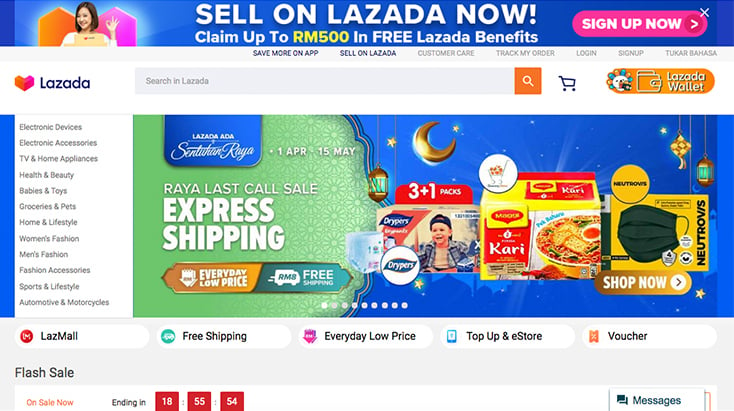
Who: Lazada is a prominent eCommerce platform operating in Southeast Asia, with a strong presence in countries like Indonesia, Malaysia, the Philippines, Singapore, Thailand, and Vietnam.
What: Lazada offers a diverse range of products, including electronics, fashion, beauty, and more, providing a comprehensive marketplace for sellers.
When: Established in 2012, Lazada has rapidly grown to become a key player in the Southeast Asian eCommerce landscape.
Where: Lazada primarily serves the Southeast Asian market, connecting sellers with a broad and diverse consumer base across multiple countries.
How much: Sellers on Lazada typically incur fees based on their sales, with a commission structure that varies by category. Specific rates may vary, and sellers should refer to the platform’s terms for accurate details.
Customer profile: Lazada attracts a significant monthly visitor count, with approximately 150 million users throughout Southeast Asia in 2025.
Key requirements for sellers: Sellers need to meet specific criteria, ensuring product quality and compliance with Lazada’s policies. The platform may have certain verification processes for sellers.
10. Allegro

Who: Allegro is one of the best European marketplace alternatives to Amazon and eBay and the most popular in Poland. In October 2021, it reached the global top ten of eCommerce sites.
What: Home goods, kitchenware, clothing, baby products and sporting goods.
When: Established in 1999.
Where: Eastern Europe, with strong expansion plans for neighboring countries.
How much: It won’t cost anything to get started, but Allegro takes a 9-15% fee of each item sold. It also charges sellers who highlight listings or add more than one product photo.
Customer profile: In December 2025, the website received over 350 million visits that month alone, with about 21 million registered buyers and more than 100,000 sellers.
Key requirements for sellers: You must ensure your product listings are written in Polish, and comply with European Union regulations.
Related article: Selling on Allegro – One of Europe’s largest marketplaces
Emerging Marketplaces Worth Watching in 2025
TikTok Shop
Social commerce is rapidly gaining traction, with platforms like TikTok Shop growing at an estimated rate of 31% annually. This represents a new frontier in social commerce integration.
JD.com
China’s second-largest marketplace by GMV, JD.com continues to close the gap with Alibaba’s platforms and represents significant opportunities for international sellers looking to enter the Chinese market.
Temu
The fast-growing platform has gained significant traction in Western markets, offering competitive pricing and a wide product selection, particularly for consumer goods.
How to Choose the Right Marketplace for Your Business
When selecting from the biggest online marketplaces in the world, consider these factors:
Target Market: Choose marketplaces that align with your target demographics and geographic regions.
Product Category: Some marketplaces excel in specific categories – Etsy for handmade items, Amazon for general merchandise, or specialized platforms for niche products.
Fee Structure: Compare commission rates, listing fees, and additional costs to understand the total cost of selling.
Customer Support Requirements: Platforms like Amazon and Walmart require excellent customer service standards. Consider using comprehensive customer support tools to manage multiple marketplace communications efficiently.
Logistics and Fulfillment: Evaluate shipping requirements, fulfillment options, and delivery expectations for each marketplace.
Final thoughts
Extending your reach around the world is surprisingly easy when you use online marketplaces. Whether you want to gain customers in Europe, Asia or the US, using some of the world’s top marketplaces is a great way to get in front of new audiences and, ultimately, boost sales.
The landscape of online markets continues to evolve rapidly, with new players emerging and established platforms expanding their reach. In 2025, successful sellers are those who diversify across multiple marketplaces while maintaining excellent customer service standards across all channels.
For sellers looking to expand internationally, consider exploring opportunities on European marketplaces or learning how to sell on specific platforms to maximize your global reach.
With the right strategy and proper marketplace management tools, businesses can successfully navigate the complex world of global eCommerce and tap into the tremendous growth opportunities that these platforms provide.
Book a free demo today to learn more about how eDesk can help you sell more on international marketplaces.
